Media | Articles
Original Owner: This B-52 Navigator Fell for a ’73 Big-Block Corvette
At age 11, Don Webb acted on a fantasy many kids that age have: He drove a car. His short, risky trip in a brand new 1960 Corvette nearly took him through the garage wall in his family’s new home near Nashville. The Vette was one of two in the garage, which was serving as a hiding place for Harry Sadler Chevrolet in nearby Goodlettsville, where his dad was general manager.
“Back then, dealers would hide cars before the official new model-year reveal day,” Webb remembers. “I would charge my friends a quarter to see them.”
Home alone one day, the young entrepreneur spotted the keys in both Vettes and hopped in the one with the Powerglide automatic. “I thought, ‘I’ll just crank this baby.’ Then I backed it out of the garage and quickly realized I should put it back.”
The cold, high-idling engine revved and the car began to slide on the new, slick concrete floor. The frightened boy killed the ignition and let the car roll to where it had been sitting.
“The whole house smelled like exhaust fumes,” he recalls. “I opened all the windows and turned on fans to clear it out. But that got me excited about Corvettes.”
Marketplace
Buy and sell classics with confidence
The experience also sparked his interest in car design. As a high school sophomore in 1964, Webb entered the Fisher Body Craftsman’s Guild. This national car design competition supported by General Motors ran from 1930 to 1968, awarding 400 college scholarships. Webb’s model won First Place, Junior Division in Tennessee. An entry the following year won Honorable Mention in the Senior Division. Webb still has both models.
After college, however, his career would take off in a very different direction, and it also landed him his own Corvette.
Cold War Intrigue

Webb entered the Air Force in 1971 and served as a B-52 navigator on active duty until 1981. Afterward, he joined the Air Force Reserve as a C-130 navigator and retired in January 2004. He then worked as a contractor for the Air Force until 2011, maintaining mission planning computers.
Throughout his Air Force tenure, and to this day, Webb kept the 1973 Chevrolet Corvette he bought new as a dealer demo in 1974. He had tried to buy one two years earlier but ran into a roadblock familiar to young male drivers.
“Coming out of officer training, I was living in Texas and looked at a 1972 Corvette,” Webb recals. “I could afford the car, which was about $7000, but insurance was going to be $1000 every six months, because I was 23 years old. I couldn’t do it.”
Instead, Webb bought a new Impala coupe and drove it to California for his navigator training. He would put 100,000 miles on the big Chevy in just two years, many of them driving to visit his family in Tennessee. On one such trip in 1974, he took the Impala in for service at Harry Sadler Chevrolet in Goodlettsville, a Nashville suburb. He had worked there over summers in high school and college.
While waiting for his Impala, Webb strolled into the showroom to look at two Corvettes, a ’73 and a ’74.
“Both had been dealer demos, never sold,” he said. “I didn’t like the ’74 with the two-piece plastic back bumper. I bought the ’73, which had the 454 and automatic.”
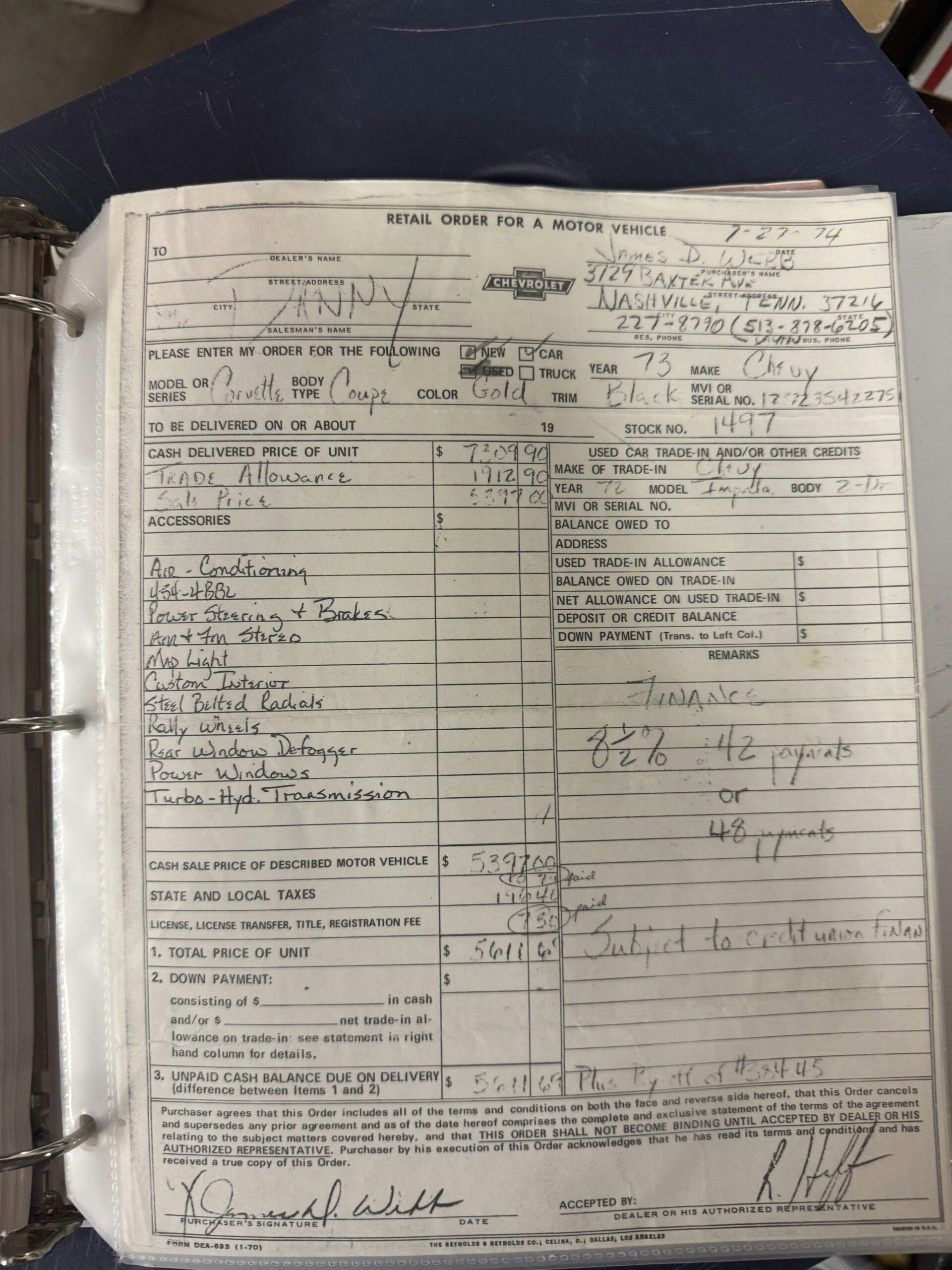
It would seem the young Air Force lieutenant was unfazed by rising gas prices triggered by the fall 1973 Oil Embargo. The dealer gave Webb $1913 for his Impala, and he drove away with a ’73 Corvette for the $5600 balance, financed at 8.5% for 48 months.
As a demo, the Corvette Yellow Metallic coupe was nearly loaded with options to reach its $7310 list price, including that regular production option (RPO) LS4 454-cubic-inch V-8. The car had accumulated nearly 8000 miles in the hands of salesmen and the dealer’s family members, but Webb was the first titled owner. Those were some tough miles, though.
“About six months after I got the car, it was burning oil like crazy,” Webb says. “So, they put a new short block in it.”
Factory Basics: 1973 Chevrolet Corvette
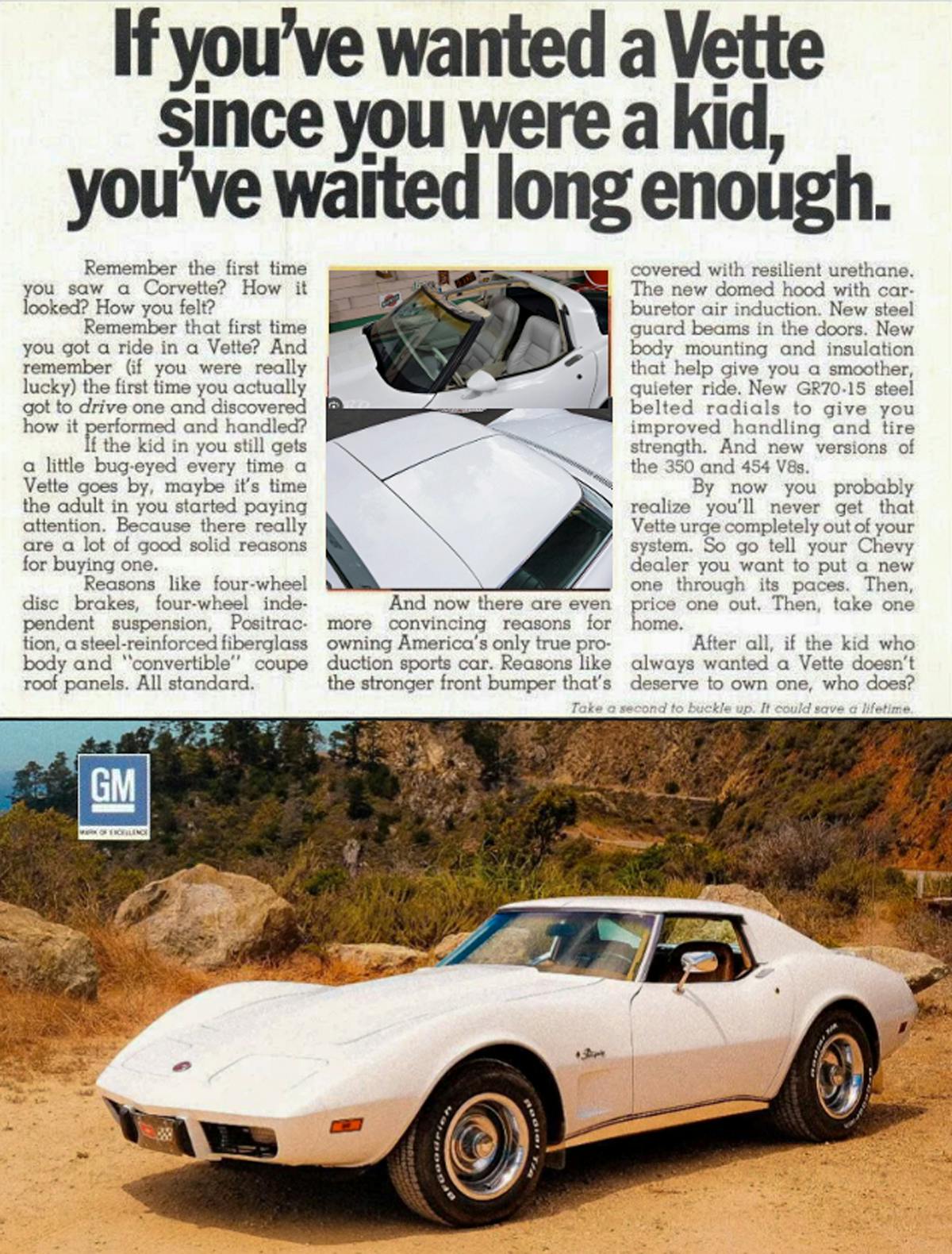
The third-generation Corvette (C3), in its sixth year for 1973, was quite a different animal from the C1 Webb first experienced 15 years before. While the new body-color, energy-absorbing front bumper was the most obvious change for the year, the ’73 Vette was filled with improvements. The convertible started at $5398 and the T-top coupe at $5561. It would be a record production year for the Corvette, with the coupe outselling the convertible five-to-one (25,521 vs. 4943).
As in 1972, the L48 350-cu-in small-block V-8 was standard, only rated at 190 net horsepower, down 10 from the previous year. The base price included the buyer’s choice of a four-speed manual or three-speed Turbo-Hydramatic transmission. Four-wheel disc brakes, Positraction differential, Rally wheels, tinted glass, and an anti-theft alarm system were also standard.
Optional engines were revised over 1972. For $299, the new 250-horsepower hydraulic-cam L82 350 replaced the 255-hp LT1 solid-cam engine, keeping its big-valve heads and beefy internals and priced a substantial $183 less. (The L82 was also used in that year’s Camaro Z/28 package, rated at 245 hp.) The L82 was a respectable performer, Car and Driver getting a four-speed version from 0–60 in 6.7 seconds and the quarter-mile in 15.1 at 95.4 mph.

The LS4 454 big-block replaced the LS5, with a slight bump in compression, for 275 net hp vs. 270. The LS4 cost $50 less than the L82, but the L82 sold more (5710 to 4412). All Corvettes used a new cowl-induction air intake setup. Not surprisingly, the LS4 with its 390 lb-ft of torque was the quickest Corvette for 1973. In Car and Driver’s hands, an automatic LS4 with the mild 3.08:1 axle ratio cleared the quarter mile in 14.7 seconds at 97 mph. The days of high-compression, 13-second big-block Corvettes were gone, but the LS4 was still a blast to drive.
New, softer body mounts and much additional sound insulation calmed the C3’s sometimes noisy, creaky ride. The ’73 was the Corvette with radial tires, which improved handling and ride. There were other body changes, too. Better resins in the fiberglass improved panel quality. The coupe lost its removable rear window, and simpler fender vents were molded into the fiberglass, with no grilles. Doors gained side-impact safety beams. The changes added 100 pounds to the Corvette, but road testers praised the car’s added refinement.
Options on Webb’s 1973 Corvette:
- LS4 454-cu-in V-8: $250
- Air conditioning: $452
- AM/FM stereo: $276
- Custom interior trim: $154
- Power steering: $113
- Power windows: $83
- Power brakes: $46
- Rear window defogger: $41
- White-stripe steel-belted radial tires: $32
(There were likely a few other options not listed on the bill of sale, which oddly listed the standard Rally wheels as options.)
Piling on the Miles

While stationed at Wright-Patterson Air Force Base in Dayton, Ohio, Webb drove the Vette in all weather. As with the Impala, he piled on miles with family visits to Tennessee.
“I got an assignment to an aerial gunship stationed in Florida, and I would drive from Florida back to Nashville on days and weekends off,” he says.
Later, he was stationed with a Strategic Air Command wing at Wurtsmith Air Force Base in Iosco County, Michigan, on Lake Huron. He spent much time in the alert stage for you-know-what.
“I met my wife, Alicia, there, and the Corvette became my secondary car,” he said. “I still drove it, but not as much.” When he entered the Air Force Reserve in 1981, Webb was stationed in Milwaukee, and the couple had a home built there while living in Chicago. The house had a three-car garage, so the Corvette could always be inside.
Driving home after a flight one night in 1985, the Vette’s steel rear leaf spring broke, and Webb limped the car into a parking lot. A service station owned by a fellow airman’s father replaced it with a fiberglass TRW spring, which Webb said noticeably improved the car’s driving.

Then, life got so much bigger. A son, Justin, was born in 1986 and daughter Margie two years later. “I took Justin to the hospital to meet his new little sister, and that was the last time I drove the Corvette for a long time. I put it up on jack stands for the winter,” Webb says.
In spring 1989, Webb lowered the car off the stands and encountered electrical trouble. Unable to get it started, he put it back up. “I didn’t have time to fool with it,” he says. “I was working 60, sometimes 80 hours a week, sometimes flying twice a week at night, going on deployments on weekends and sometimes for two weeks.”
The months and years flew by as the kids grew up, went off to college, and eventually married. The Corvette, which had about 83,500 miles, didn’t come off the jackstands again until 2015, when Webb decided to get it back on the road.
Corvette Revival

An Air Force friend of Webb’s, retired industrial designer and British car collector Jeff DeBoer, introduced him to Bill Crow in Lapeer, Michigan. Crow was a former GM Proving Grounds employee, and he’d been repairing and restoring Corvettes for 40 years. Webb agreed to buy all the needed parts and to help Crow revive his Corvette, saving him half on the labor cost. “He had all the tools, the shop, and knowledge. I was just the labor.”
They would return the Vette to road use while maintaining originality as closely as possible. Crow confirmed there was only surface rust on the chassis, no structural issues. The car’s paint and interior were left alone.
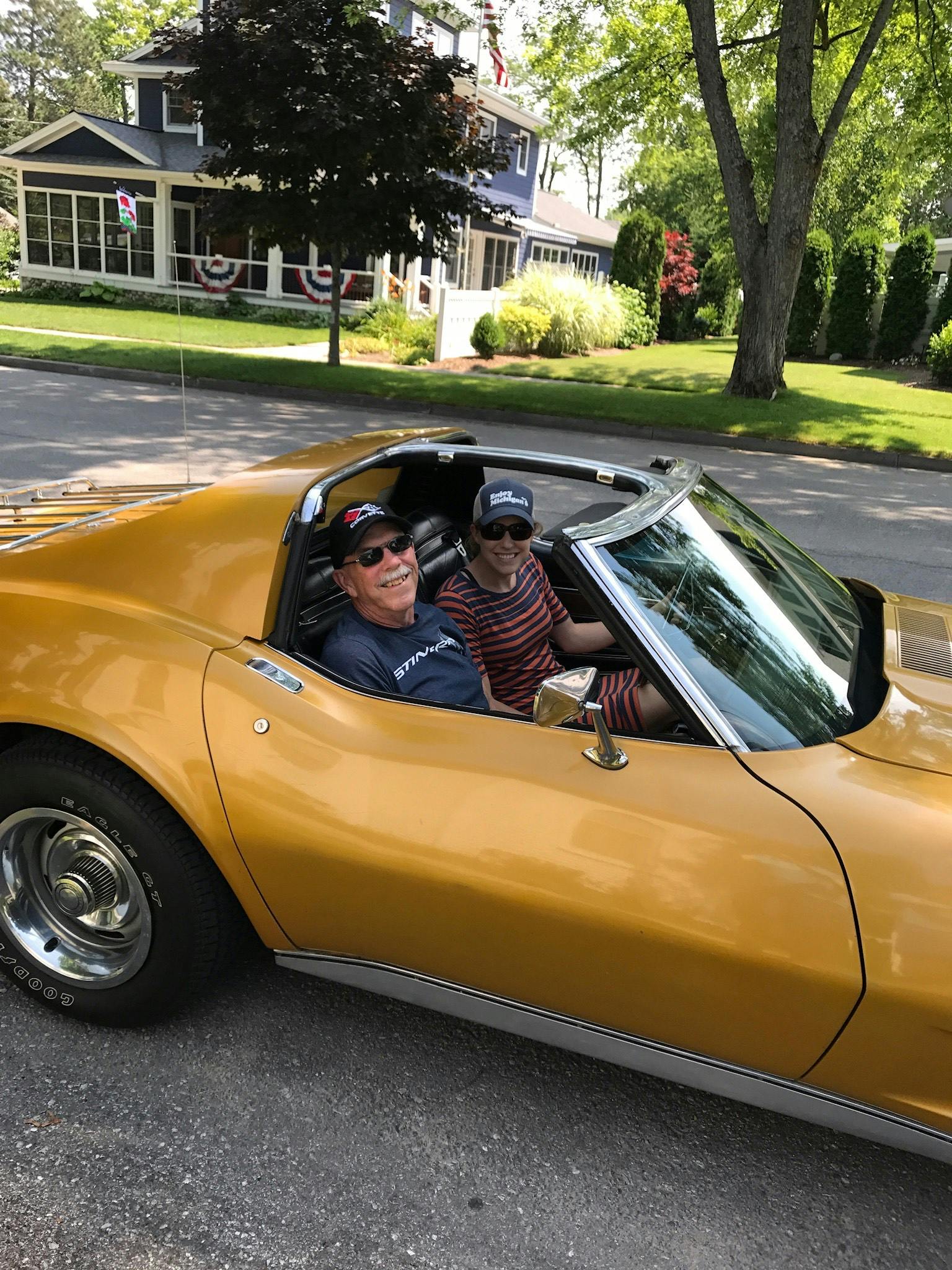
“My goal was to get it ready for my daughter’s wedding, but that didn’t happen,” Webb says. “There was just too much to do. We’d work on it when I had time. We started with the brakes, then the fuel system and ignition. We rebuilt the starter and alternator and installed an electronic ignition. After we got it running, we rebuilt the transmission. The A/C was out while we were working on it. I’m deciding if I want to replace it or install a Vintage Air system.”
The engine did not need a rebuild, but they pulled the left-side head to replace the lifters. When the Corvette was road-ready, Webb began driving it about 1200 miles a year, including the Lap the Lake road rally around Lake Michigan. Not surprisingly, driving the car revealed more issues.
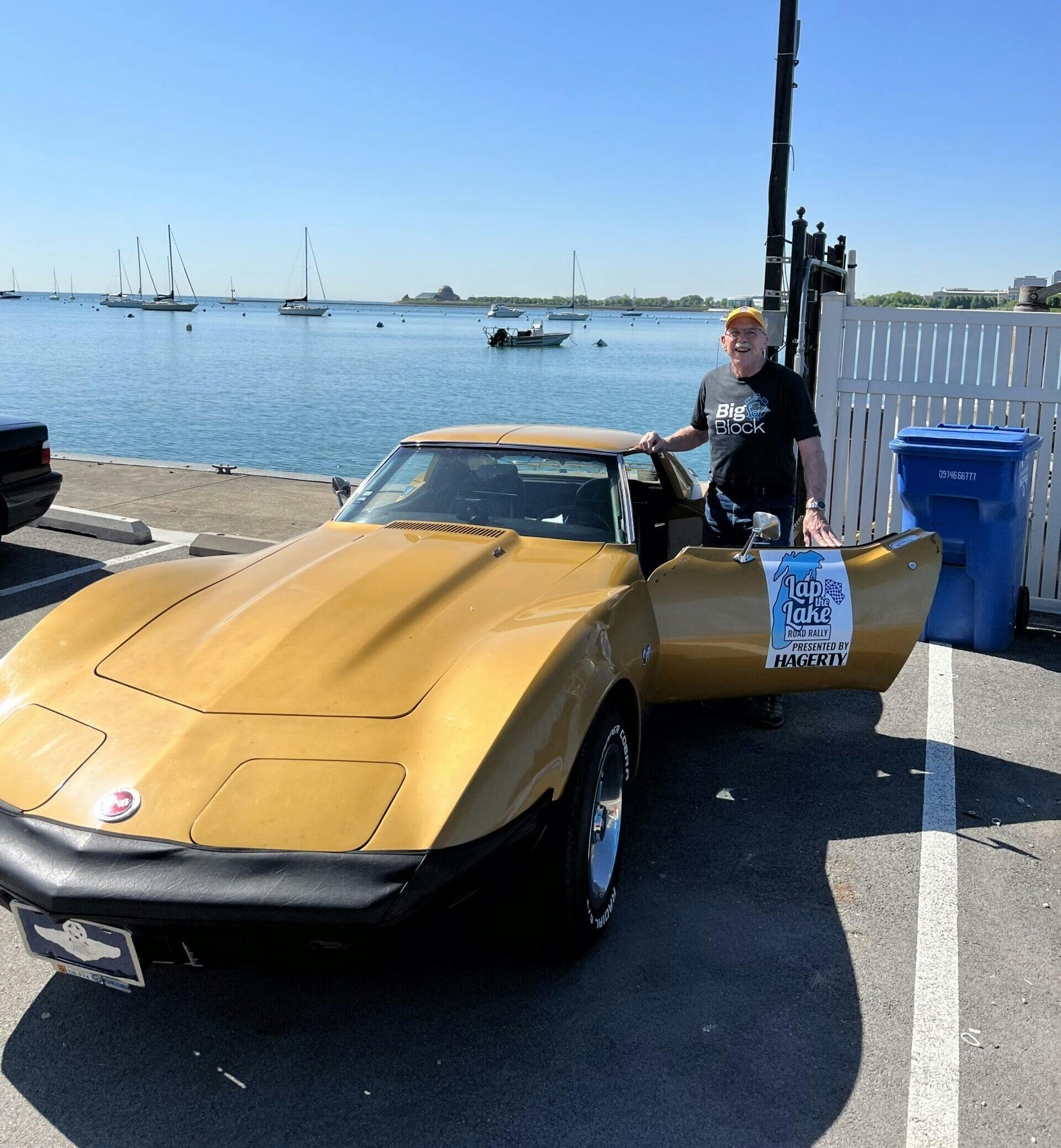
“The first year I did the Lap the Lake, I came home with a fuel leak, oil leak, power steering leak, and radiator leak,” Webb says with a laugh. “I replaced the power steering with a Borgeson unit, which reduces the number of hoses to two.”
He would go on to do two more Lap the Lake rallies but will miss the fifth and final one this May. He also makes it to numerous shows around Michigan and to Hagerty’s cars and caffeine events at its Traverse City headquarters.
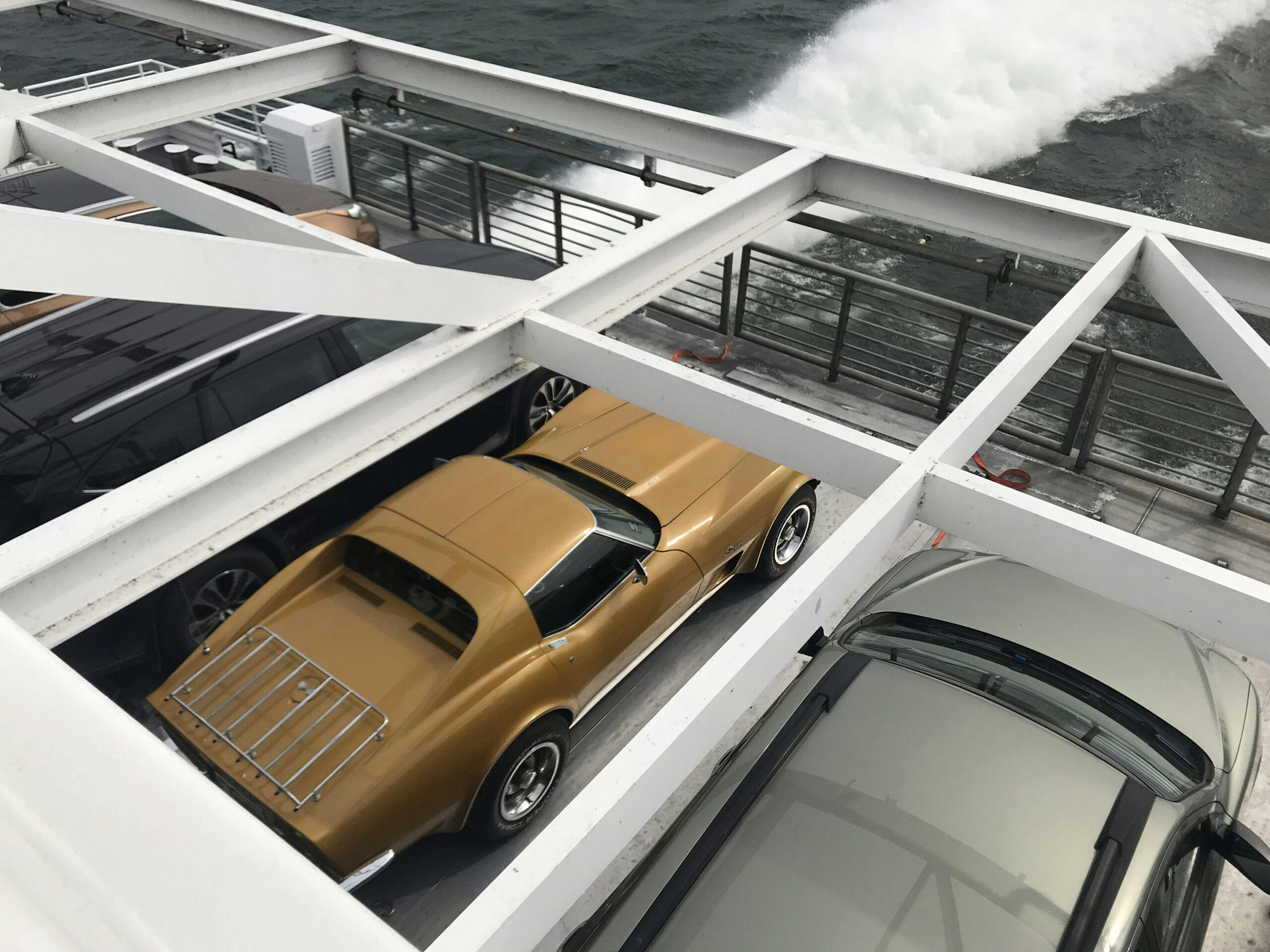
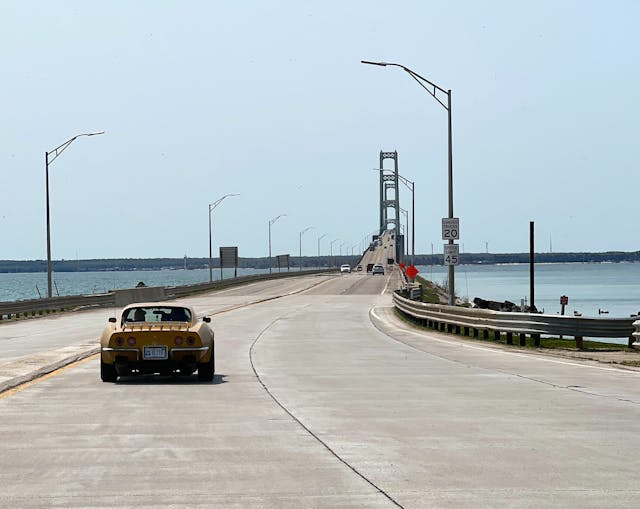
Corvette Memories
Hagerty: When you put the car in storage in 1989, did you just consider selling it?
Webb: Many times, I thought about selling it but didn’t make the effort. I’m glad I didn’t. My wife would say, ‘Just hang on to it. You can fix it someday.’ With life going on, it just wasn’t a priority for a long time.
Hagerty: How does your wife like going on road rallies in the Corvette?
Webb: She likes going. She likes to drive it, too. When I had eye surgery and couldn’t drive for a while, she would take me out riding in it. My daughter and son both love driving the car when they visit.
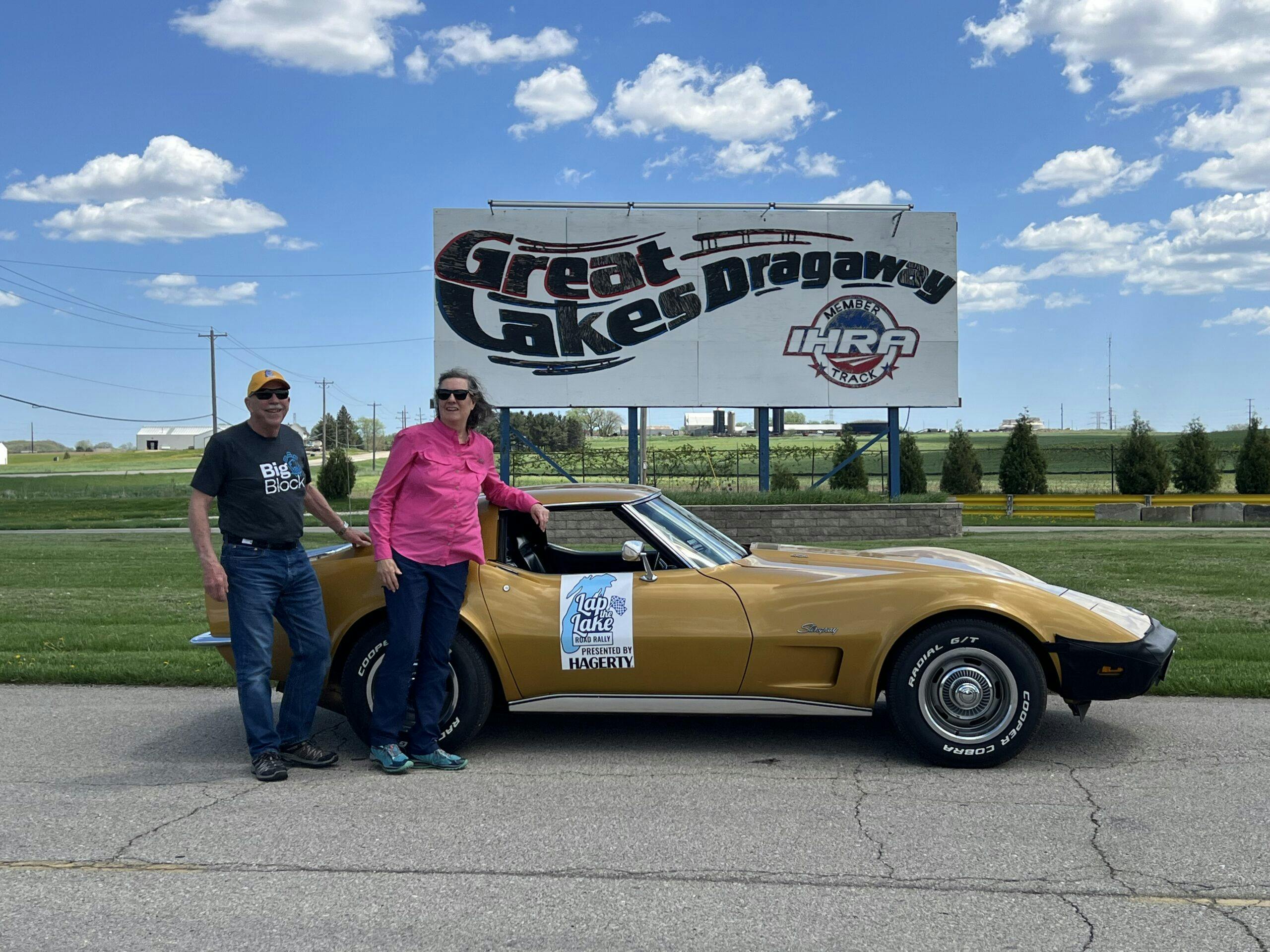
Hagerty: How was the car on all those long drives back and forth to Tennessee over the years? Was it reliable?
Webb: Other than when the rear spring broke, I never had it break down on me where I couldn’t get it home.
Hagerty: Did anything else fail?
Webb: The original radio stopped working. My wife bought me a new stereo, and my daughter bought me speakers. So now it’s got Bluetooth hands-free, and I can play music from my phone.

Hagerty: Did your teenage interest in car design stay with you in some way?
Webb: Yes. In 2017, a group of local retired car designers organized the “Cars as Art” show as part of the annual Cars in the Park in Northport on Memorial Day weekend. They displayed their sketches and models. Bob Smart, a friend and car designer, invited me to display my Fisher Body Craftsman’s Guild models and trophy. I met Jerry Palmer, head designer on the C4 Corvette, along with Ernie Barry, the Dodge Viper designer, and Bill Collins of Pontiac and DeLorean.
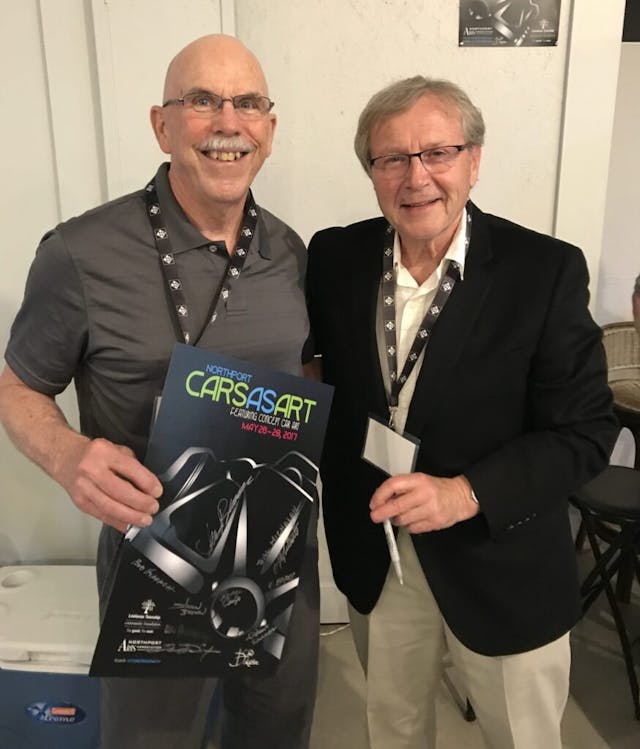

Hagerty: Have you done any car shows with the Corvette?
Webb: My friend, Jeff DeBoer, runs the Rolling Sculpture Car Show in Ann Arbor, and he also has a car show in Alden, Michigan. He convinced me to enter my car, and I got third place among American entries. I never intended to keep the Corvette as a show car—it was always my driver. It’s got its little dings and chips from putting many miles on it and from sitting in storage. That’s how it’s been going. It’s my fun car to drive, my original Corvette.
__
Car: 1973 Chevrolet Corvette LS4
Owner: Don Webb
Home: Northport, Michigan
Delivery Date: July 27, 1974
Miles on car: 94,000
__
Are you the original owner of a classic car, or do you know someone who is? Send us a photo and a bit of background to tips@hagerty.com with ORIGINAL OWNER in the subject line—you might get featured in our next installment!




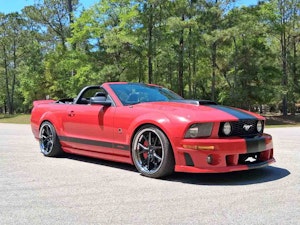

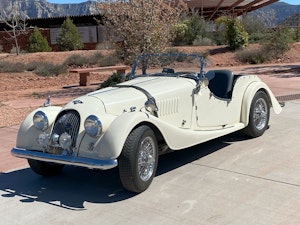
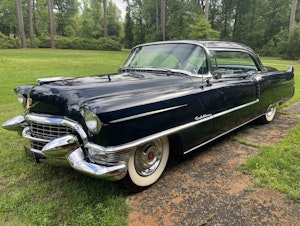





























Great story and great car! There is always hope the mid-late 70’s Corvettes will get the recognition they deserve. Puzzling, though is why did the cylinder head have to come off to change lifters? I’ve owned and rebuilt several big-block Corvettes, cam and lifter change only requires removal of the intake.
I wondered the same thing. Never pulled a head to replace lifters.
Thos are mostly smiles not miles brother!
Those are mostly smiles, not miles brother!
These stories are always enjoyable. Thanks for this series.
Corvette and Boss 302 designer, Larry Shinoda has been quoted as saying the 1973 Corvette was one of his favorite designs. He thought the blend of the soft front bumper and the metal rear bumpers was pleasing to his eye.
Speaking of bumpers, that is a 1974 in the “You have waited long enough” ad. Please note the soft rear , non-chrome, bumper cover.
It’s at least a ’75 with the front bumperettes on either side of the front number plate.
The ad was used to illustrate the “wanting a Corvette since you were a kid” message, which described Don Webb, the subject of the story.
Gas was cheap back then. I had a 74 LS4 Big Block and that was one thirsty car. It was never a driver. I have a 75 W30 Hurst Olds now and at 12 mpg, it is not as thirsty as the Vette was.
I love the story. Glad to see the car is still out there cruising.
How many hoses are on a Corvette power steering system? More than the usual 2 apparently…
Hopefully the factory air conditioning system will be retained, and not replaced with a Vintage Air system.